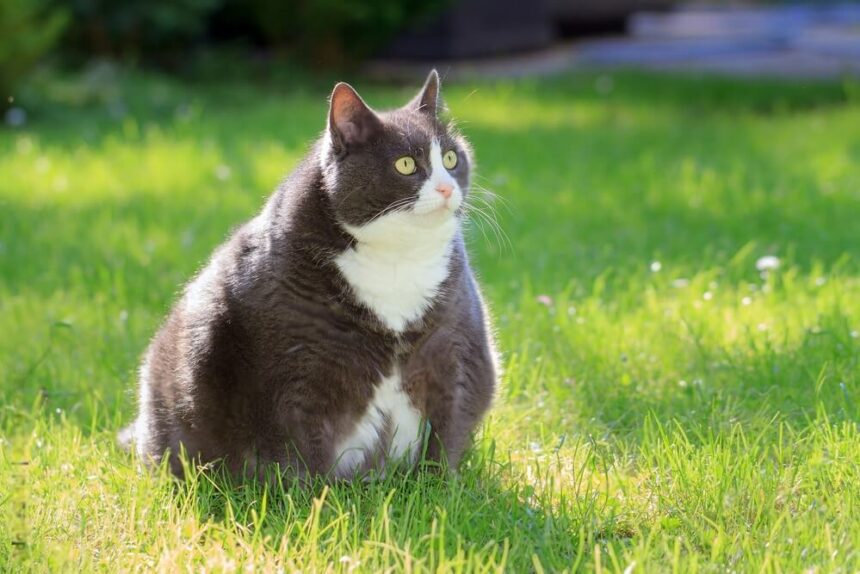Okay, let’s be real for a second – we all love a chonky cat. Those squishy bellies, the way they waddle instead of walk, it’s adorable! But cat obesity? Not so much. Your fluffball might look cute as heck, but that extra weight can seriously mess with their health. We’re talking diabetes, joint problems, and even a shortened lifespan. No bueno, right?
So, how do you keep your furry buddy fit and fine? Well, it’s time to get real about how to prevent cat obesity, and it’s not as hard as you might think. It’s just a few tweaks to their lifestyle that can make a huge difference. Let’s dive in, but don’t worry, we’re keeping this light, fun, and, uh, a little messy too. Because, why not?
Spot the Chunk – Is Your Cat Packing on Pounds?
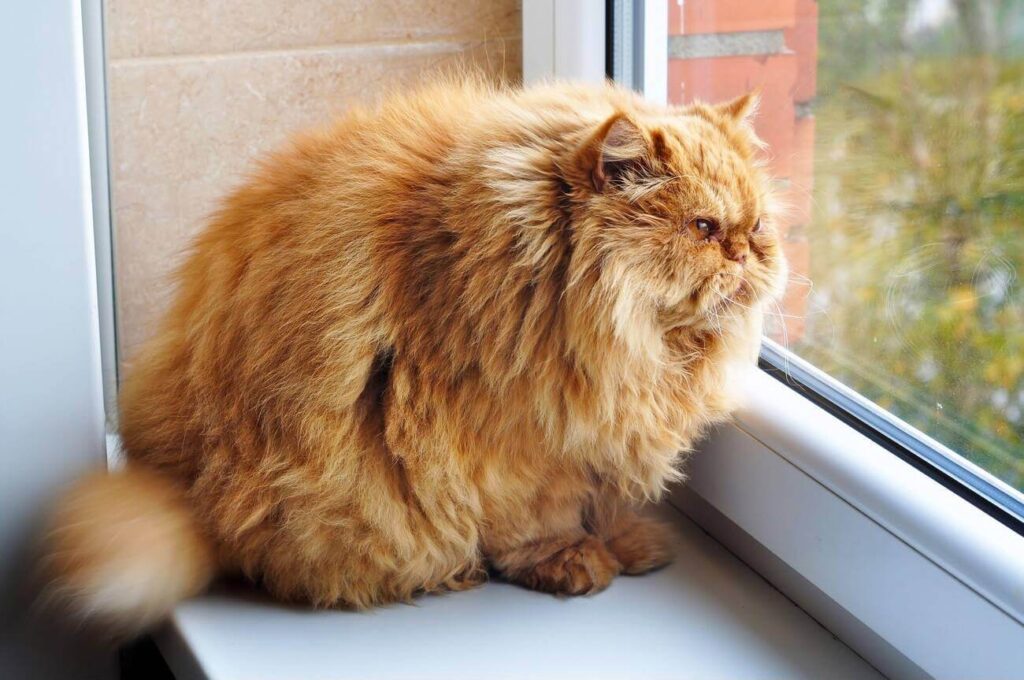
First things first, you gotta know if your cat is even overweight. And no, just because they look fluffier than normal doesn’t mean they’re fat—it could be just fur! So, here’s how you can figure it out:
- Check the ribs – If you can’t feel your cat’s ribs easily when you pet them, that’s a sign there might be extra padding
- Look from above – When you peek down at your kitty from above, they should have a nice little waistline (yep, cats have waists too). If it’s more of a blob situation, that’s a red flag
- Notice the tummy sag – Some cats have what’s called a “primordial pouch”—a little flap of skin that helps them in case of a fight. But if that pouch looks more like a full-on sagging belly, hmm, you might want to check the scale
If your cat is starting to look more like a loaf than a sleek, agile hunter, it’s time to take action before they tip into cat obesity territory.
Why Cat Obesity’s a Big Deal (Literally and Figuratively)
Before we talk about prevention, we gotta understand why this even matters. A chunky kitty might be cute, sure, but it’s not healthy. Cats that pack on extra weight can suffer from all kinds of health problems, like:
- Diabetes. Yep, cats can get that too
- Heart disease. Not just a human thing
- Joint pain. Carrying around extra weight is rough on those tiny legs
- Shorter lifespan. Yeah, you want your fur baby around as long as possible, right?
Now that you know the stakes, let’s figure out how to avoid that “fluff turned flab” situation altogether. You ready? Let’s go.
How to Prevent Cat Obesity
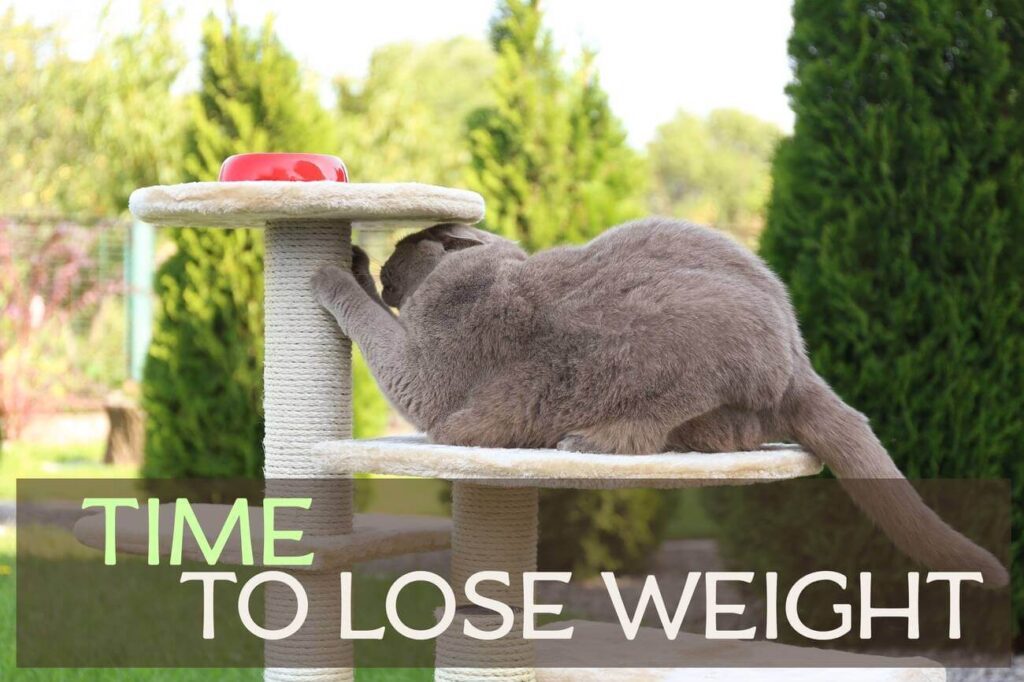
Diet – The Foundation of Everything
This might sound obvious, but honestly, what your cat eats is the biggest factor in controlling their weight. You are what you eat, right? Same goes for cats. And let’s be honest, cats are not out there hunting wild snacks—they’re relying on you to dish out the goods. So let’s talk diet, because it’s not just about portion control, it’s also about what’s actually going into that dish.
Pick the Right Food
- High-protein, low-carb – Cats are obligate carnivores, which means their bodies are designed to thrive on animal protein. All that filler junk in some cat foods (looking at you, carbs) is what piles on the pounds
- Avoid free-feeding – Leaving out food all day? Not the best move. Cats aren’t natural grazers, they’re hunters. Set specific meal times instead of letting them snack 24/7
- Wet food FTW – Canned food usually has fewer carbs than kibble and more moisture, which is great for their health and can help keep those extra pounds at bay
Portion Control – Not Just for Humans
Alright, let’s talk portions. You can’t just pour food into their bowl and hope for the best. Most cats need somewhere around 200-250 calories per day, give or take, depending on their size. If you’re feeding your cat too much, even the healthiest food can cause weight gain.
How to prevent cat obesity through portions? Easy, just measure. Use an actual measuring cup, not just eyeballing it. And if you’re not sure how much your cat should be eating, check the back of the food bag or ask your vet. And stick to a routine. Cats love predictability
Treats Are Cool… But Don’t Overdo It
Now, I get it. You want to spoil your little furball. Who doesn’t? Treats are a way to bond and make your kitty feel special, but remember this: treats add up. You can think of them like little caloric bombs. Even a couple of treats a day can make your cat pile on weight without you realizing.
Instead of high-calorie store-bought treats, try things like:
- Bits of cooked chicken or turkey – Just a teeny bit though, we’re not going for a full meal here
- Catnip or toys – Sometimes, your cat just wants attention, not food. A quick play session can distract them from begging for treats
Exercise – Time to Get That Cat Moving
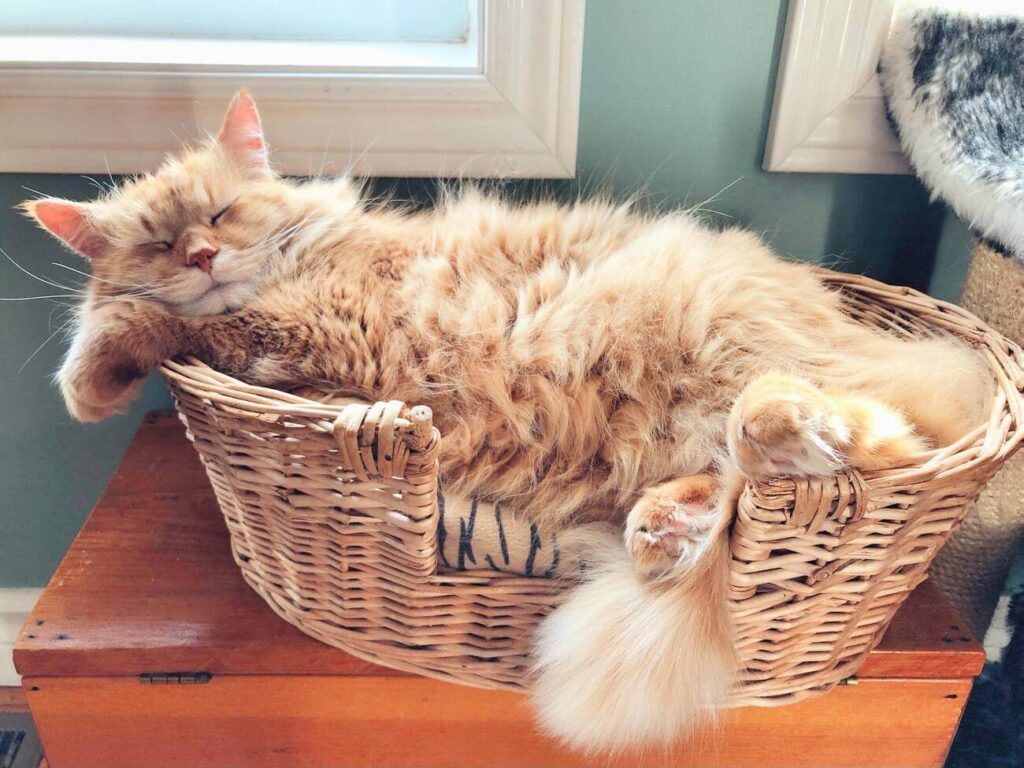
Ever seen a lazy cat? Yeah, same. Cats are famous for napping a lot. Like, 16 hours a day, no joke. But don’t let them use that as an excuse to avoid exercise. Cats need activity just like we do, even if they’re more into zooming around the house at 2 AM than hitting the gym.
Playtime Is Serious Business
The good news? You can trick your cat into burning calories by making playtime super fun. Grab a toy or a laser pointer and go nuts. Think of it like their workout routine—you gotta stick to it.
Here’s some ideas:
- Laser pointer games – It’s basically cardio for cats. They’ll chase that little red dot like their life depends on it
- Feather wands – It taps into their natural hunting instincts and makes them leap, jump, and pounce like a wild cat
- Interactive toys – Things like battery-operated mice or toys that move on their own will keep your cat moving even when you’re busy
And here’s a little secret: consistency is key. Aim for 10-15 minutes of playtime at least a few times a day. You’ll be amazed at how quickly your cat can shed pounds with regular exercise.
Pro tip: Play before feeding. It mimics their natural hunt-eat-sleep pattern, and it’ll make ’em more likely to chow down right after.
- Schedule daily playtime. At least a few sessions a day
- Use a variety of interactive toys
- Don’t be afraid to switch it up. Cats get bored quick
Mental Stimulation – Cats Get Bored Too!
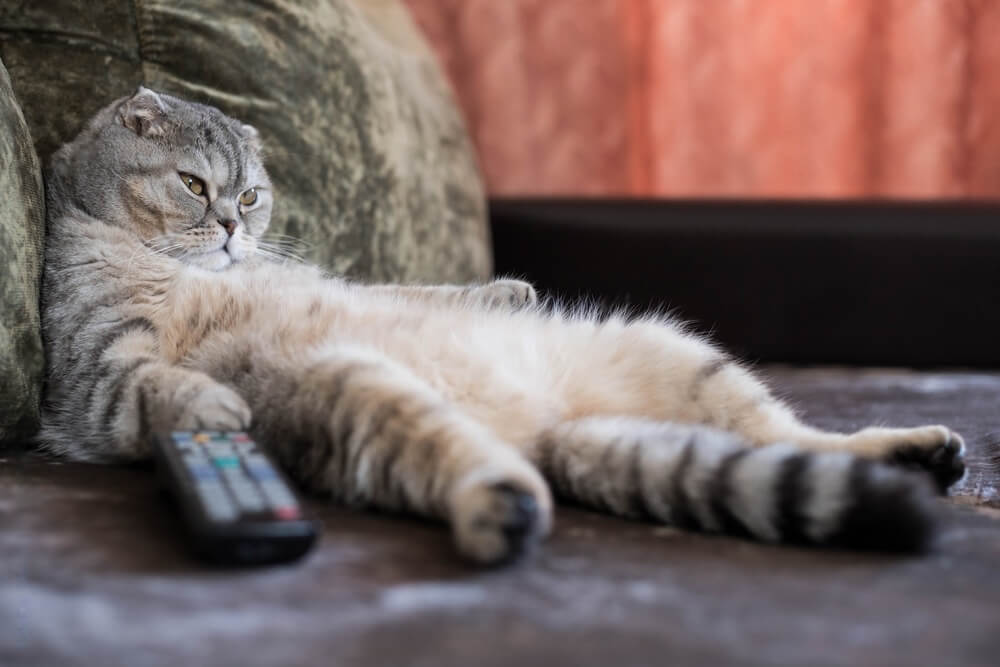
Yep, that’s right. Just like us humans, cats get bored. And you know what happens when we’re bored? We snack. Cats are the same. If they don’t have anything to do, they’ll beg for food, and let’s be real – it’s hard to say no to those big, pleading eyes.
Here’s where it gets fun: mental stimulation keeps their brain busy and makes them less likely to be focused on food. You can try things like:
- Puzzle feeders – These are food dispensers that make your cat work for their kibble. It’s a double whammy – they get fed and exercise at the same time
- New toys – Switching up their toys regularly will keep things fresh and exciting for them
- New environments – Switch up the furniture, add a cat tree, or let ‘em explore new rooms
- Window perches – Give them a spot to watch birds or squirrels outside. It’s like TV for cats and can keep them entertained for hours
- Clicker training – Yeah, you can train a cat! Start small, and soon they’ll be doing tricks
Keeping their mind active is one of the most underrated ways of managing their weight. Trust me, a mentally stimulated cat is way less likely to overeat out of boredom.
The Wet vs. Dry Debate
Alright, here’s something people love to debate: wet food vs dry food. While both have their benefits, wet food tends to have fewer calories and more moisture, which is great for keeping your cat hydrated. Plus, it’s usually more filling, which means your cat feels satisfied with less.
Dry food, on the other hand, is often more calorie-dense, and because it’s easy to leave out, people tend to overfeed. Solution? You guessed it: moderation! If you’re giving your cat dry food, measure it carefully and consider mixing in some wet food to control those calories.
- Try combining both for balance
- Wet food helps with hydration and portion control
- Dry food should be carefully measured
Spaying and Neutering: A Weighty Factor
You might not know this, but spaying or neutering your cat can actually slow their metabolism a bit, meaning they’re more likely to gain weight if you don’t adjust their food intake. Don’t panic though, it’s nothin’ too crazy. You just need to be aware and reduce their calories slightly once they’ve had the procedure. This is another reason why it’s important to keep an eye on that food bowl.
Keep an extra close eye on their weight post-surgery
After spaying or neutering, adjust their calorie intake
Watch Out for Health Issues
Now, here’s the deal. Some cats might gain weight no matter how hard you try to stop it. If you’re following all the tips and your cat’s still looking a little hefty, there could be something going on underneath the surface.
Certain medical conditions, like hypothyroidism or diabetes, can cause weight gain, so it’s a good idea to check with a vet if you’re concerned. They can run tests and help you figure out if there’s a bigger issue at play.
Pro Tip: Regular vet check-ups will keep you ahead of the game. Your vet can spot early signs of obesity-related health problems and guide you through a weight-loss plan if needed.
Keep Tabs on Their Weight
Last but not least, you gotta monitor that weight. Weighing your cat regularly (without them scratching’ your face off) is a great way to track progress. It’s super simple to weigh them at home. Just grab a regular scale, weigh yourself first, then weigh yourself while holding your cat. Subtract the difference, and voila! Cat weight.
If you notice your kitty tipping the scales more than usual, it might be time to cut back on food or up the exercise.
- Track their weight in a notebook or on your phone for easy comparison
- Weigh your cat once a month
- Use a simple home scale
The Importance of Routine
Cats, more than most pets, thrive on routine. They love knowing when their next meal is coming and when it’s time to chill or play. This predictability helps them stay calm and reduces their urge to overeat. So set up a regular feeding and exercise schedule. It’ll do wonders for their waistline.
- Stick to specific mealtimes – Don’t just leave food out all day. Serve breakfast, lunch, and dinner at set times
- Combine mealtime with playtime – Right after your cat eats, get them moving with a short play session. It mimics the hunt-eat-play-sleep cycle they’d have in the wild
Final Thoughts on Preventing Cat Obesity
At the end of the day, how to prevent cat obesity is really all about balance – balancing their food intake with exercise and mental stimulation. Your cat doesn’t need to be ripped (lol), but keeping them at a healthy weight will help them live longer, happier lives.
It’s not about depriving your cat of joy or turning them into a workout fanatic. It’s just a few simple steps—feed them the right stuff, keep portions in check, and get them moving a bit more. You got this! Your cat’s going to be living their best, healthiest life in no time.
So go on, grab that feather wand and let’s get to work



